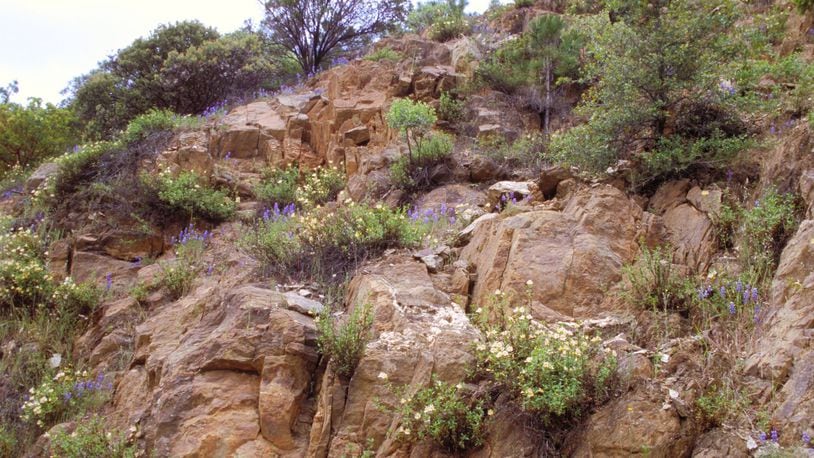Because natural disasters can change the nitrogen content in the soil or make it unavailable to plants, many natives don’t show up in these areas until well after the event. More immediately the lupine pop up in the wreckage just as the red poppies of France followed the damage to land suffering trench warfare. In Europe though, nitrogen was available due to the spilled blood enhancing the corn poppy, Europe’s colonizer that flourished after the Armistice.
In the West, the nitrogen-deficient conditions make lupines thrive. These are among the legumes, which include peas and beans. You’ll know this by the pods that follow lupine flowers. Legumes have a unique ability to use atmospheric nitrogen in lieu of soil nitrogen due to an unusual mycorrhizal relationship in its roots. This makes lupines one of the best revegetation perennials because it will not have to struggle through the first year’s low nitrogen conditions.
In the past, lupines were called “wolf flowers” because they grew where no other wildflowers dare to sprout. The ancients noticed this and believed lupines chased away all other plants around them. Modern science proved it was simply that lupine survives, even thrives, in barren ground where little else will.
A perfect example is the plethora of lupine that tend to hug roadsides in dense mats of low purple flowers. These are the annual species that thrive on moisture trapped beneath the paving. It seeps out in the gravelly shoulders long after rain ceases to fall. This virtually infertile verge catches all the seed to create incredibly dense annual lupine displays flanking pavement.
Another example are cliff faces where these annual lupine show up in extreme conditions. As ephemeral annuals, seed washes down the cliff face with rain to catch in the nooks and crannies. Here they will germinate along with native monkey-flower. After maturing they leave seed to grow next year.
Consider growing the big inland native sub-shrub, Lupinus albifrons, or silver lupine. They thrive on hot alluvial slopes or road base and decomposed granite on the steepest inclines imaginable. These root deeply into the granular base for anchorage and moisture deeper inside the hillside. These perennials show they enjoy porous ground that keeps them properly wet and dry, with nothing but rainfall to become established.
Along the coast the best perennial is Lupinus arboreus, which offers a similar plant that adapts to fog and maritime conditions. Such a perennial is ideal for post fire mudslide zones as well as burned over sites north of Los Angeles.
Mixed lupine wildflower seed can be distributed by hand over any site to assist in revegetation. Not only will the annuals thrive in burned over earth, they may self sow and begin a permanent colony. However, depending on rainfall, the germination rates can be altered by too much or too little moisture at critical times.
Plant perennial lupine from small, nursery grown specimens as soon as the ground can be worked this spring. Give them plenty of sun and a well drained site to lift your blues and prepare for the long rebuilding period to come.
———
Maureen Gilmer is an author, horticulturist and landscape designer. Learn more at www.MoPlants.com
About the Author
